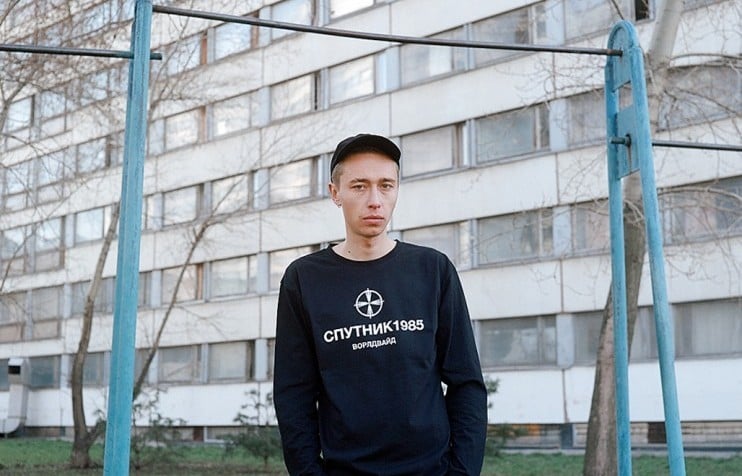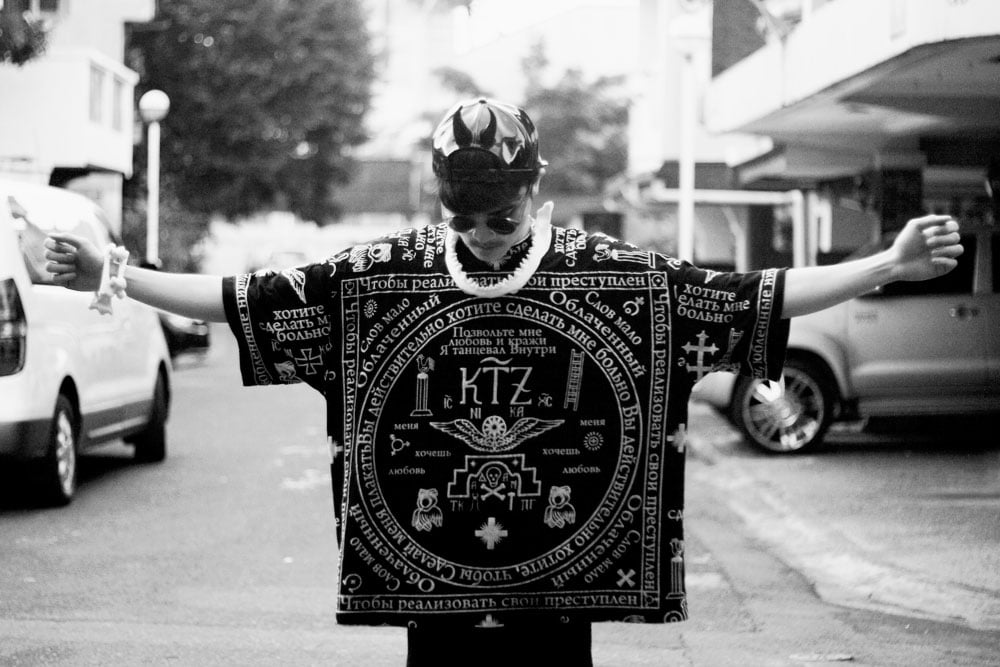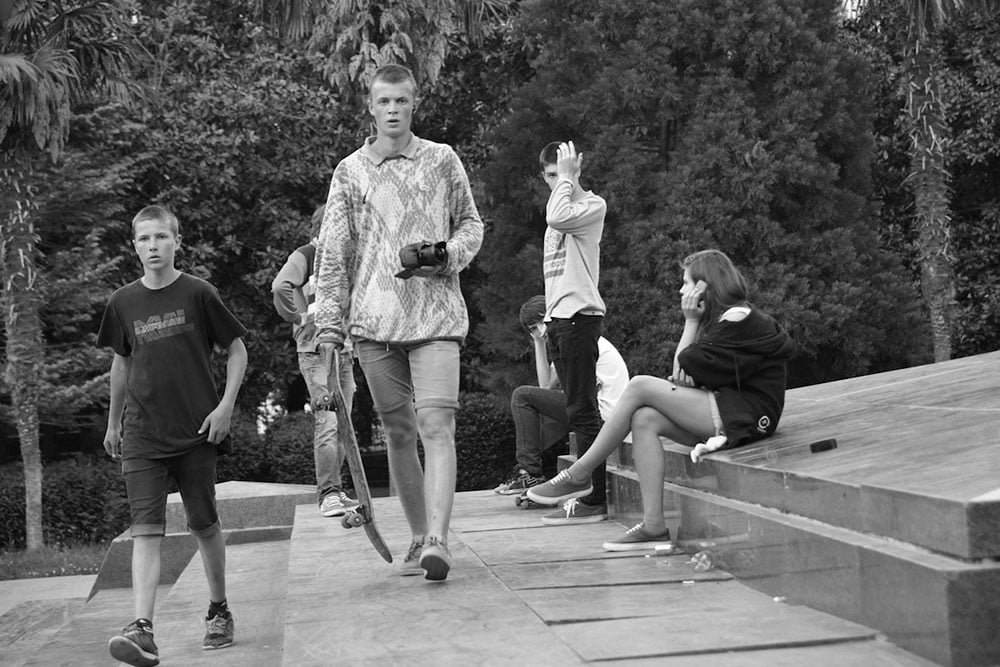Soviet symbols on the catwalk: is it a step too far for fashion?
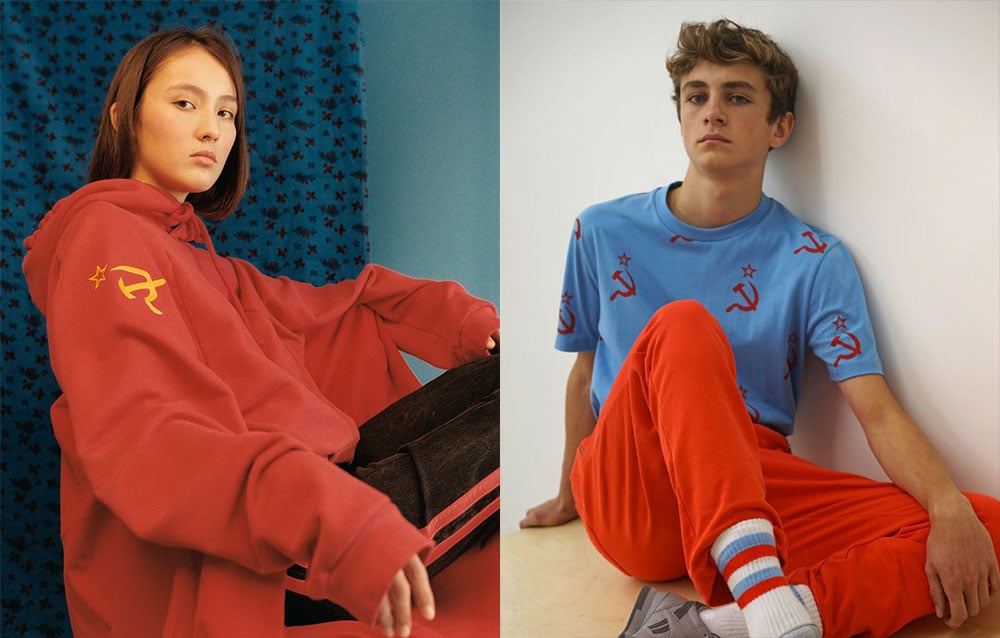
Once the preserve of dodgy T-shirt stalls, clothes sporting communist symbols have migrated to the world of high fashion. Now Kim Kardashian's wearing a $700 hammer and sickle hoodie, perhaps it's time we questioned the appropriateness of such a trend
In November 2016 Paris-based label Vetements released yet another sought-after item: a voluminous red hoodie adorned with a hammer and sickle. The burning red oversized jersey hung gracefully from the model’s skinny body in the promo shots, the Soviet symbol winking at you from her right shoulder. The $700 hoodie was produced in an edition of 50 for SV Moscow store but despite the air of exclusivity it reminded me of the stacks of cheap T-shirts in souvenir kiosks in my native St Petersburg. Back then, “communist” souvenirs seemed embarrassingly dated and ridiculous, only for ignorant tourists. But in recent years somehow the casual-wear hammer and sickle has made a stellar comeback — in the world of high fashion.
It’s not the first time communist symbols have become an obsession in mainstream fashion. In the mid-2000s Moscow-based fashion designer Denis Simachev rose to stardom exploiting the colourful mishmash of Russian visual culture: from red and gold flower ornaments to fur, enormous jewellery, cartoon characters and Soviet insignia. It predictably caused outrage among our parents’ and grandparents’ generations, who felt as if the sacred symbols of their former beliefs were being mocked and depreciated. Milan catwalks were no place for the sign of the international proletarian brotherhood — but kitsch and laughter were perhaps necessary for getting over the past.
Now, 10 years later, we’re unexpectedly stuck in a prolonged visual hangover of the era. Vetements, whose head designer Demna Gvasalia was born in Soviet Georgia, have enjoyed overwhelming success because the language they speak is so timely. They isolate powerful tokens of our day-to-day existence — the DHL logo, the words Polizei and Security from uniforms — and insert them into a new narrative of irresistible coolness. We live in times of a complete loss of context — the blurring of meanings is a great liberation, but also, as 2016 taught us, a potential tragedy.
We live in times of a complete loss of context — the blurring of meanings is a great liberation, but also, as 2016 taught us, a potential tragedy
Vetements, however, is only the tip of the iceberg — it’s impossible to talk about the recent rise of Russian and Soviet symbols in global visual culture without mentioning Gosha Rubchinskiy. Since the early days his work has reflected the curiously dual identity of Russia’s emerging generation. In 2009 Rubchinskiy called his first collection “The Evil Empire”, subverting Reagan’s Cold War rhetoric — the epitome of the Western gaze. His peers are never oblivious to the Western gaze: transmitted through media, it became part of their identity, a reflection somehow shaping the real thing.
Rubchinskiy’s “1984” collection from Spring Summer 2016 featured the hammer and sickle along with lots of Russian red and Soviet fonts and slogans. When I saw it for the first time, it triggered the familiar reaction: surely this is just for the tourists — how on earth would this make sense for actual Russian people? A year later, these stylistic tropes are part of the mainstream all over the world — from the UK and US to China and Australia. I laughed at the idea of Shoreditch marketing interns wearing hammer-and-sickle tees with their Nikes — but now they do. In Russia and other countries of the new east it also worked: Soviet fonts started appearing in fashion magazines and prints created by streetwear brands. The Vetements hoodie arrived just on time, regardless of all the political baggage it dragged along with it.
Today even trackpants represent the working class better than the hammer and sickle
For a boy or a girl born in the early 2000s, the hammer and sickle is perhaps just a curious relic of the past. At the same time, it calls to mind a political and cultural struggle that is still ongoing in many countries of the new east. Georgia, Hungary, Latvia, Lithuania and Ukraine have banned symbols of “totalitarian and criminal ideology”, and the public display of the hammer and sickle and other Communist symbols such as the red star are considered a criminal offence. Ukraine, where the struggle for identity and independence is particularly poignant, is currently going through the process of decommunisation, dismantling the legacies of the communist state, removing monuments and renaming public places. When the decommunisation laws were approved in April 2015, 22 cities and 44 villages in Ukraine had to be renamed. Gaping holes on buildings and monuments where stars used to be show how difficult and controversial the struggle is. Among the emerging generation of Ukrainian fashion designers, Yulia Yefimtchuk is perhaps the only one working with the communist legacy. For her it’s not so much about the past but the ideology, a youthful utopia of equality and peace which perhaps never existed and hardly ever will.
When the hammer and sickle emerged a hundred years ago during the Russian revolution, the hammer stood for industrial labourers and the sickle for the peasantry. The significance of manual labour and the idea of the working class have shifted so much since then that today even the trackpants appropriated by Gosha Rubchinskiy represent the working class better than this communist symbol. But still, why does the Vetements hoodie trigger a somewhat unsettling feeling? For me, when someone brings up communism at a party, it’s a bore — just like most national stereotypes. But also because it sums up today pretty well. We live in an era when marketing managers call themselves Marxists, Barbara Kruger’s artworks pop up on H&M T-shirts and an alt-right fashion tutorial is something which actually exists on the internet. It always makes me think of the “fixed-gear cyclist bombing down Stoke Newington High Street in a GENERAL PINOCHET T-shirt”, mentioned in a Guardian article on the 10-year anniversary of Nathan Barley. Even if you could spare $700 for a hammer and sickle hoodie, you wouldn’t want to be this guy, would you?
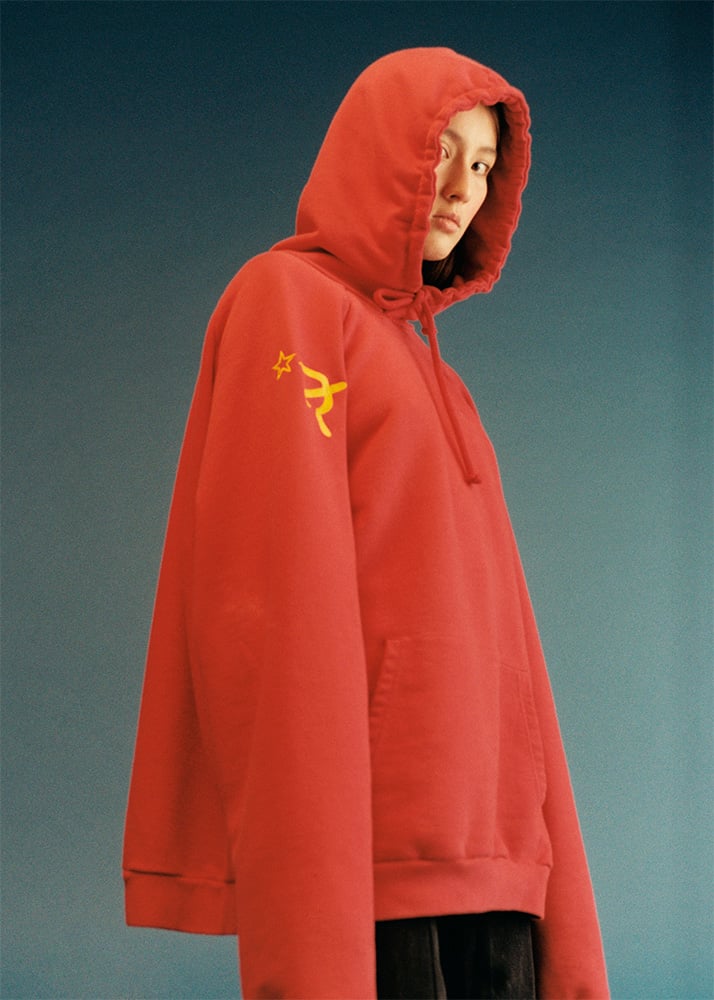
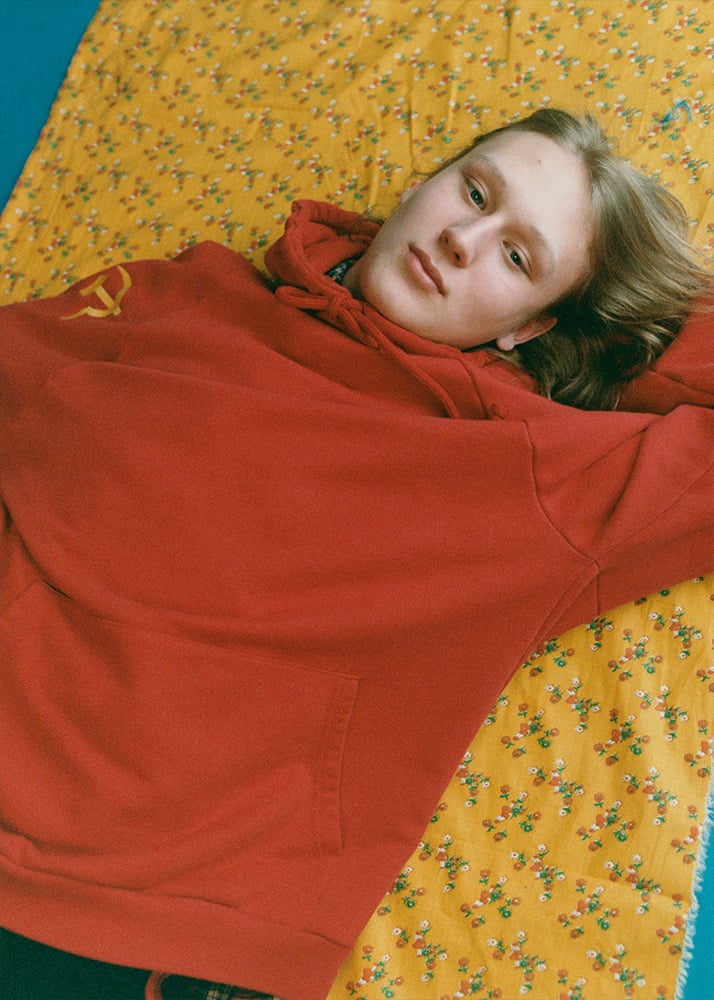
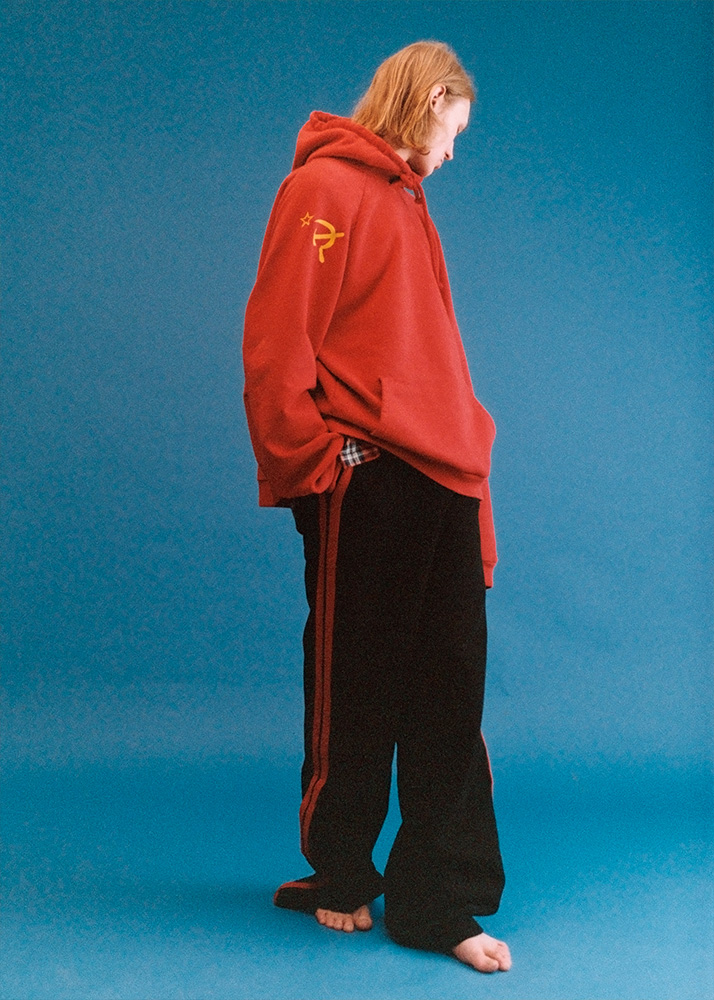
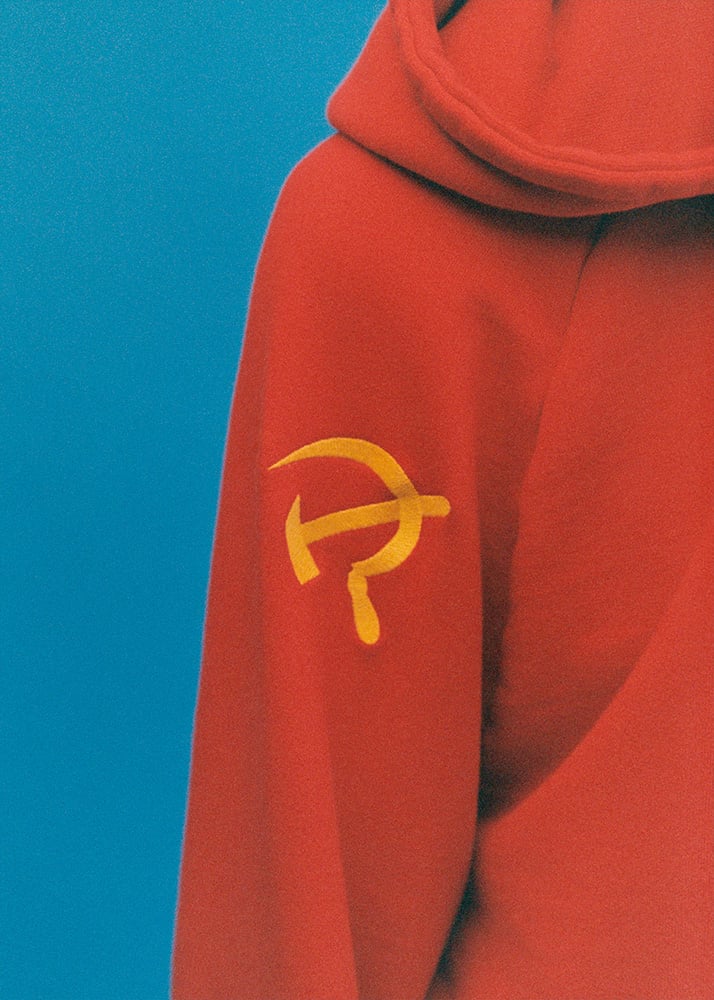
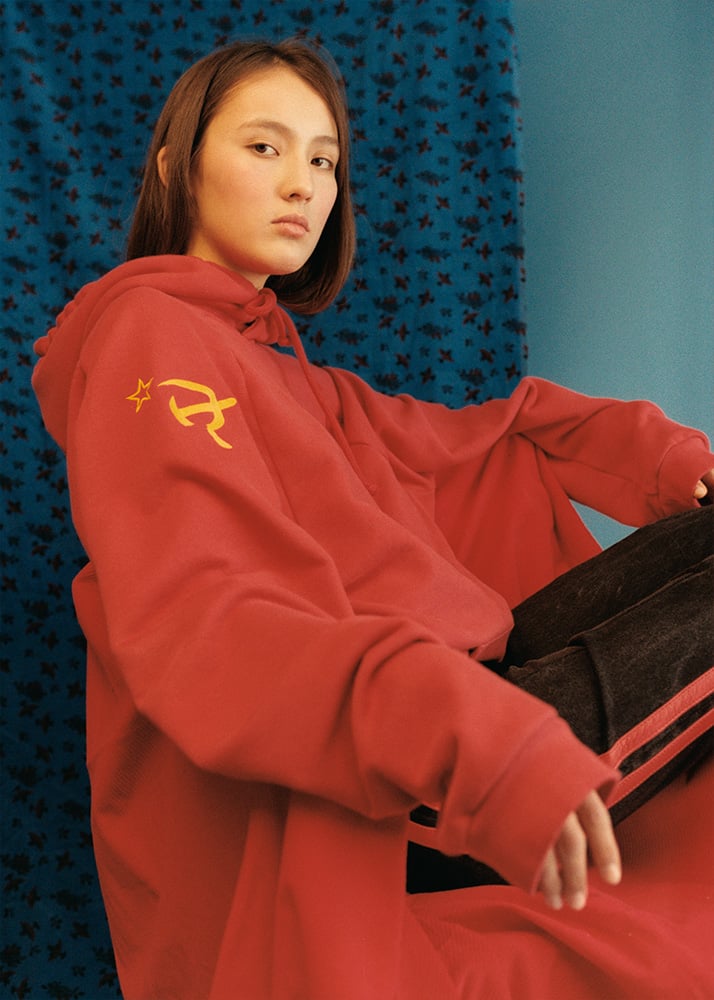
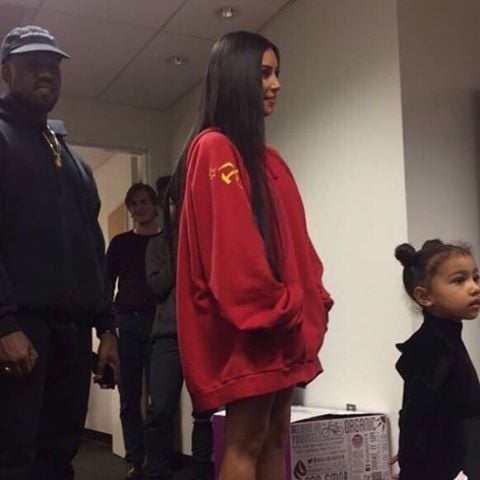







.jpg)
.jpg)

